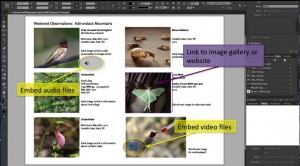by Baynard Bailey
Anthropology Professor April Beisaw is a very active user of GIS (Geographic Information Systems) and other technologies in her research and in her classroom. ACS recently produced a video featuring Professor Beisaw employing mobile mapping devices in the field (devices she was able to purchase via the Frances D. Fergusson Technology Exploration Fund). Using the GPS mobile mapping device makes it easy to collect data that can then be imported/loaded into GIS to make nice maps. The video features April Beisaw using mobile mapping devices for field research.
Professor Beisaw continues to be a dynamic user and an advocate for using various GIS (Geographic Information Systems) technologies in her classroom. Last year she asked that QGIS be added to the base image for public computers on campus. I didn’t know about QGIS until April pointed it out to me. QGIS is a free and open source tool that empowers users to “create, edit, visualize, analyze and publish geospatial information”. It is also cross-platform, so that means you can use it on your Mac, Windows or Linux machine. (As an educator, I really appreciate it when software is free and cross platform!) Not too long ago, April gave a little demo in her office showing me and a couple Economics professors how to import maps into QGIS and how to get started creating your own customized maps. It seemed like a great tool for teaching and research, although there is a bit of a learning curve.
All of these maps were made with free QGIS:
I should also mention that Vassar has a GIS lab (using ArcGIS) in Ely Hall 114 and that GIS is available on the SciVis Lab machines. Vassar GIS users can also arrange a consultation with Stephanie LaRose, who is a GIS specialist that comes to campus a couple days a week. If faculty or students are interested in pursuing any of these technologies or resources and would like help, please contact Academic Computing Services by emailing acs@vassar.edu.






